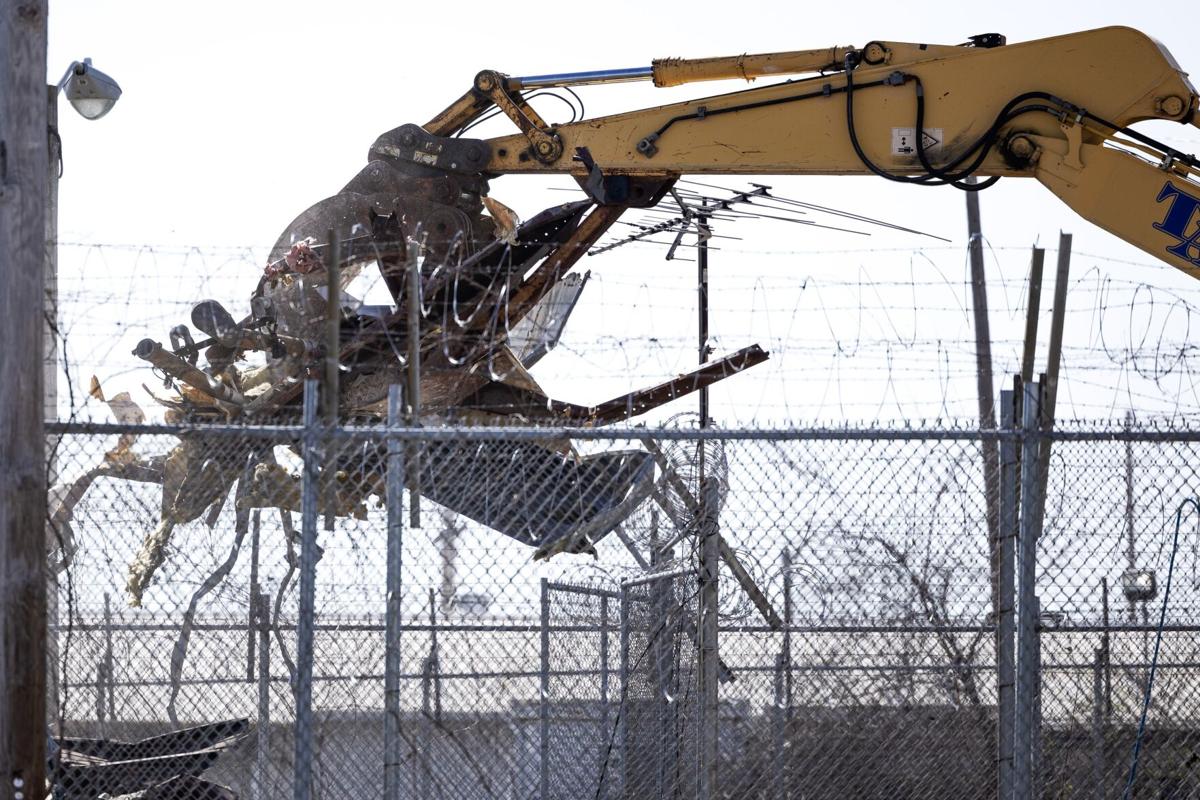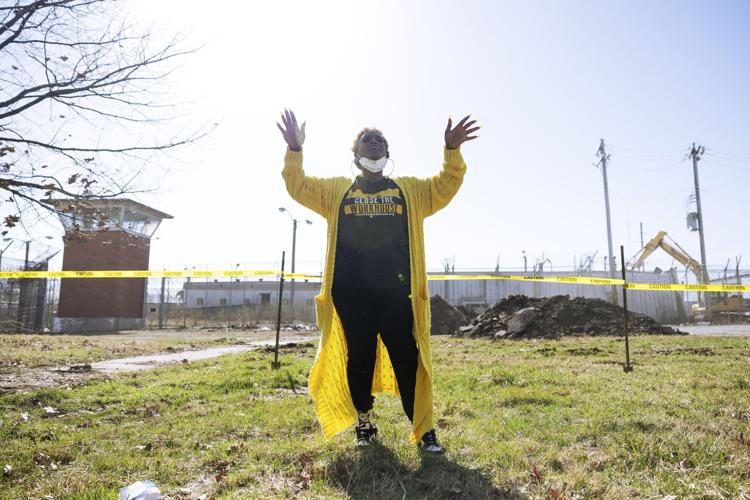ST. LOUIS â Mayor Tishaura O. Jones and community activists kicked off demolition of the old City Workhouse on Tuesday, marking the beginning of the end for an institution long derided as inhumane.
âThe workhouse is not and was not fit for human beings,â Jones told a crowd of advocates and news reporters. âNow, we make sure that no human being will be detained in this facility ever again.â
Then the mayor offered a phone to Inez Bordeaux, an activist once held at the jail on a charge later dropped. Bordeaux gave the go-ahead to the wrecking crew. An excavatorâs claw tore into a pod in the old womenâs quarters, and within minutes, the pod was in pieces.
The sound of metal meeting metal was a long-sought victory for activists who started calling for the jailâs closure a decade ago. On Tuesday, they greeted each other with hugs and warm smiles, saying âWe did it.â They even broke out into an old protest chant.
People are also reading…
The day was also a reunion of sorts for Jones and core supporters. Jonesâ call to close the jail in 2016, when the rest of City Hall was ignoring the issue, was a big reason activists backed her runs for mayor.
She has since frustrated supporters with her handling of inmate deaths and other problems at the cityâs remaining jail, and her administrationâs suggestion that tiny homes for the cityâs homeless could replace the workhouse. Activists donât think anyone should be living on such a reviled site in an industrial area. Some have said they won't vote for her again.

Activist and deputy director of Community Outreach for ArchCity Defenders Inez Bordeaux, of St. Louis, raises her hands as she leads a group of people in a chant while the crews demolish the Medium Security Institution known as the Workhouse on Monday, March 18, 2025, in St. Louis. âWe closed a jail, demolished it, and there are no plans to build a new one, find me another city that did that,â Bordeaux said about the impact of demolishing the jail.
But on Tuesday, three weeks before Election Day, Jones stood side by side with activists like Bordeaux, Kayla Reed and Blake Strode, leaders of key progressive organizations Action St. Louis and Arch City Defenders. She clapped along to the chant â âRain, sleet, snow hail, we wonât stop âtil you close that jail.â
And Bordeaux, who has been critical of the mayor at times, said Tuesdayâs moment could not be tainted by fights over other issues.
âThe mayor has always been on the right side of closing the workhouse,â Bordeaux said.
The jail, officially known as the Medium Security Institution, opened in 1966 to replace a crowded and dirty South Side workhouse. It was billed as a more dignified place, with more spacious quarters and more things for inmates to do, like work repairing furniture and making concrete products for the institution.
But in 1981, the St. Louis Board of Adult Welfare described the new jail as crowded and lacking staff. Four years later, a St. Louis grand jury called the workhouseâs restrooms âatrocious,â and said inmates needed to be provided with more mattresses and blankets. Headlines in the following decades highlighted inmate escapes, guards encouraging fights among inmates, and a lack of air conditioning.
In the wake of Ferguson protests, activists started calling for its closure.
Most city officials brushed them off. âUntil people stop committing crimes, we need a place to house them,â said Maggie Crane, spokeswoman for then-Mayor Francis Slay, said in 2016.
But Jones, then the city treasurer, calling for a full investigation of the jail â and its closure. She ran for mayor on the promise she would close it, and eventually did after winning in 2021.
The change has not been without consequences.
The city has meant to improve the facility.
Inmates facing federal charges once held in St. Louis have had to be shipped to out-of-state jails, making it more difficult for family and attorneys to see them.
Meanwhile, problems have continued at the City Justice Center jail downtown. More than a dozen detainees have died in custody since 2021. Inmates have complained of inadequate health care services, and squalid, crowded conditions.
Critics have pounced, blaming the workhouse closure. âThere are so many questions no one has the answers to,â said Alderwoman Pam Boyd, whose ward includes the jail. âIâm heartbroken for my residents.â
Jones acknowledged some of the problems in her remarks Tuesday, and said she is committed to improving conditions downtown.
âThey can and must be better,â she said.
She said the recent hiring of Doug Burris as the new jail chief will help. Burris previously oversaw the jail in St. Louis County and was credited with improving conditions there.
But Jones defended the decision to close the workhouse, recalling inmatesâ complaints about rats, roaches, moldy air and sweltering heat in the summer.
She said the city plans to put a memorial marker on the site to remember those people by. A request for proposals was posted Friday.
Demolition of the rest of the complex is expected to continue in the coming days. Conner Kerrigan, a spokesman for Jones, said it will take some time because contractors are still clearing asbestos and other dangerous materials from some buildings.The cost of demolition is $2.24 million.
Next steps were not immediately clear. Kerrigan said the plan for tiny homes is still under consideration, along with other ideas.
âBut nothing has been decided,â he said.
Activists have called for the land to be used for an animal shelter, a solar energy farm, or industrial work. They have also called for a new community resource hub elsewhere on the North Side.
Comptroller Darlene Green, who also supported closing the workhouse, seconded the solar farm and industrial use ideas in a statement on Tuesday.
âIt is my hope,â Green said, âthat the 31 acres on the north riverfront can be repurposed into a positive resource that moves the city forward.â





















